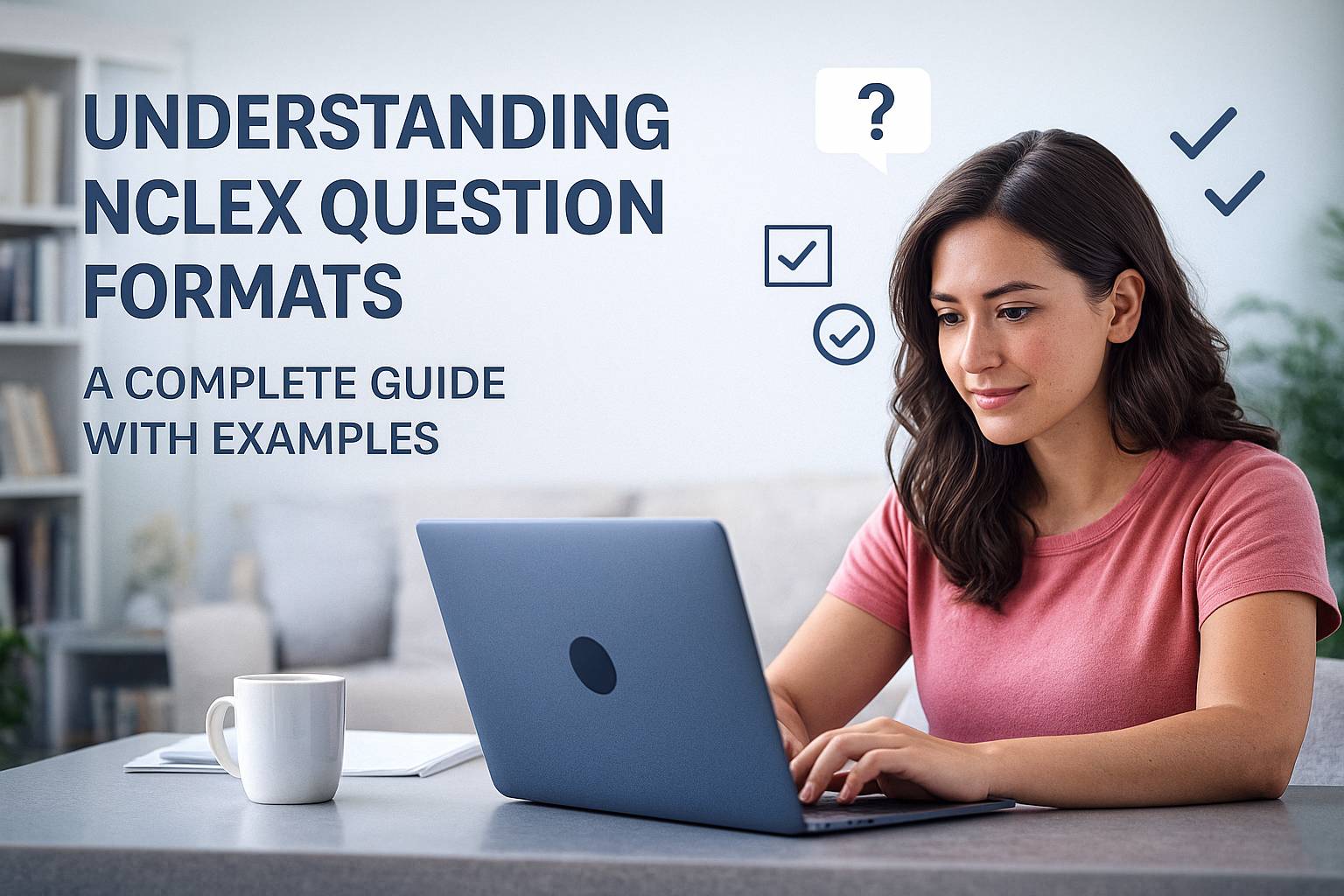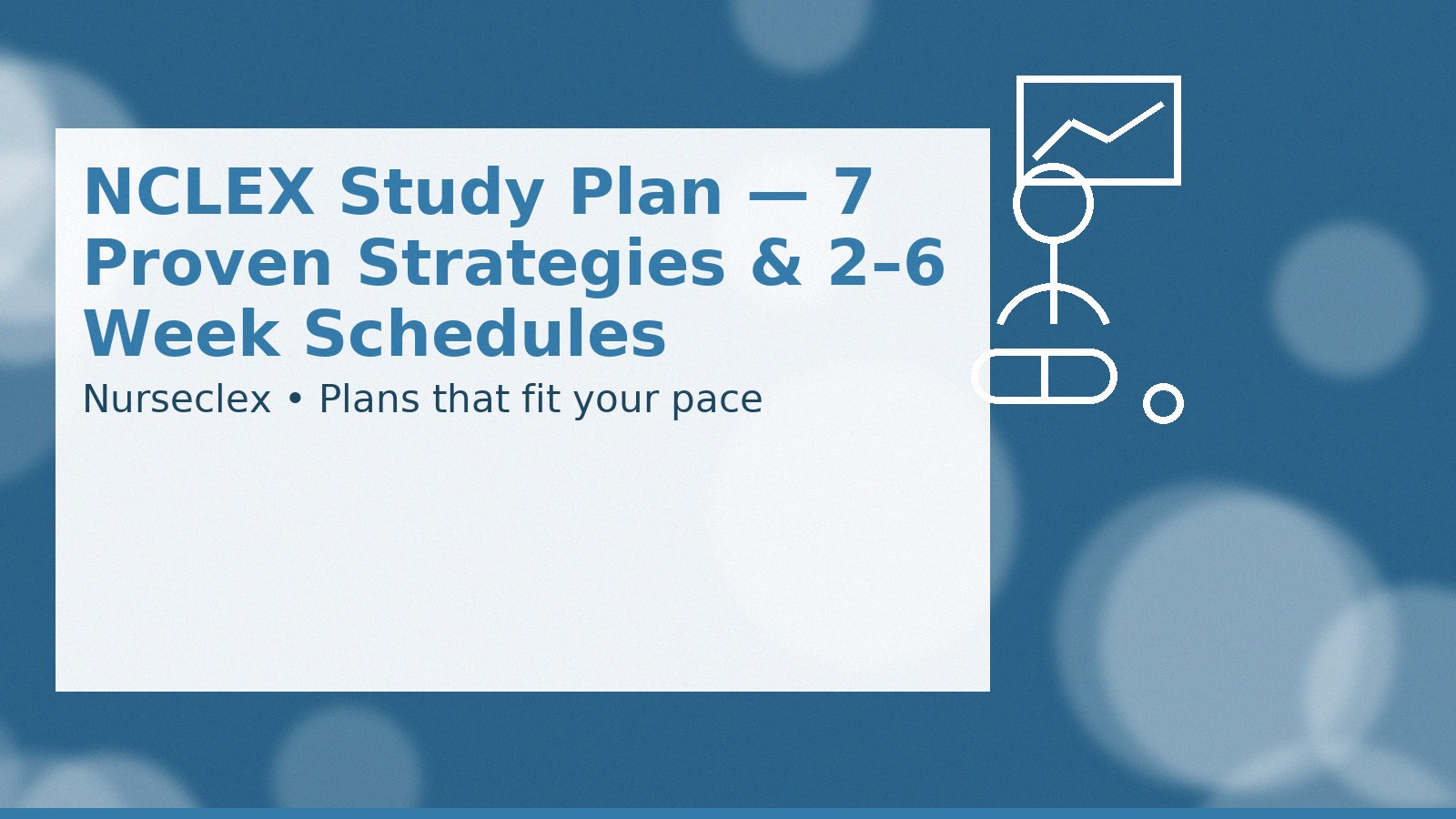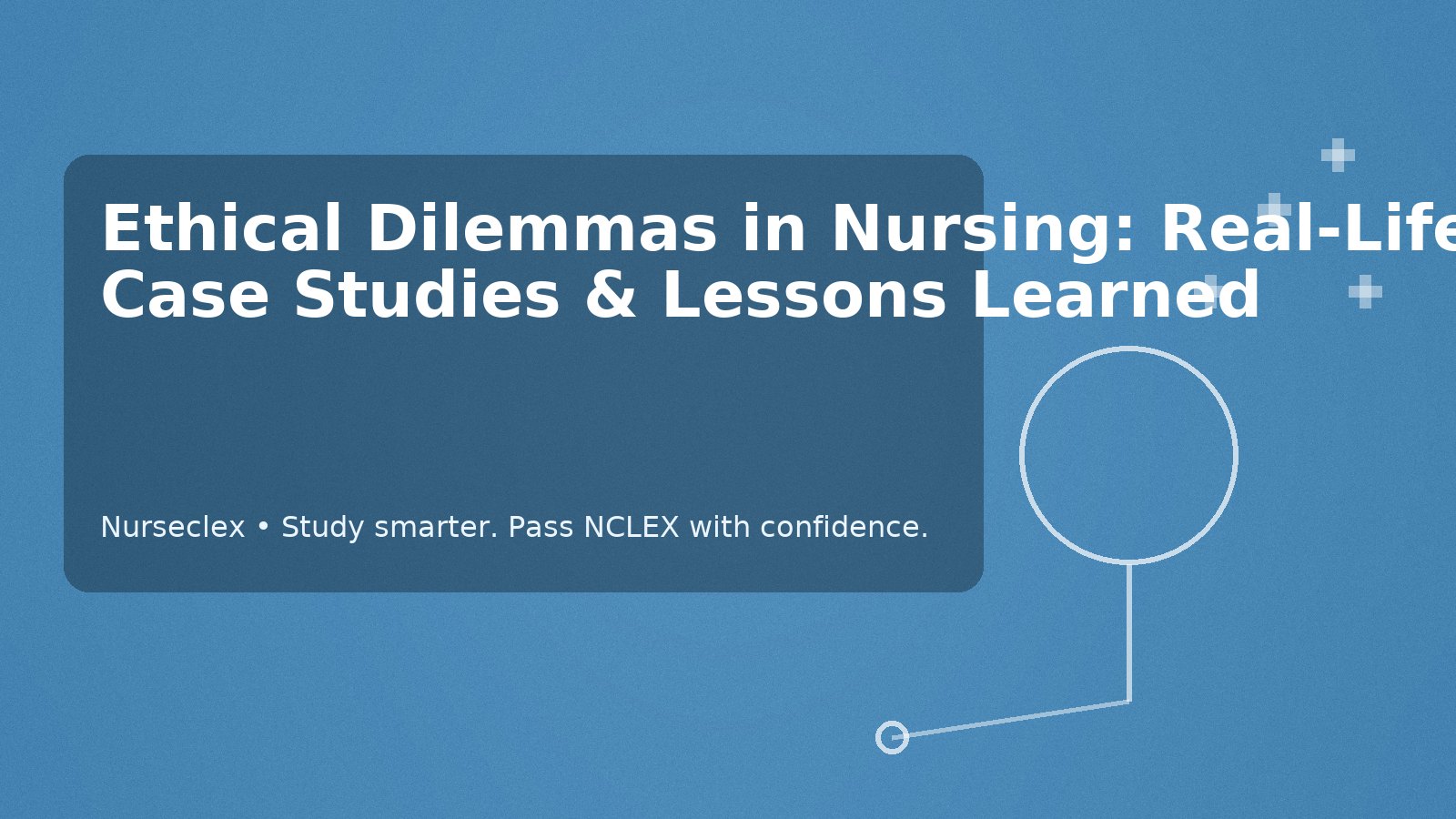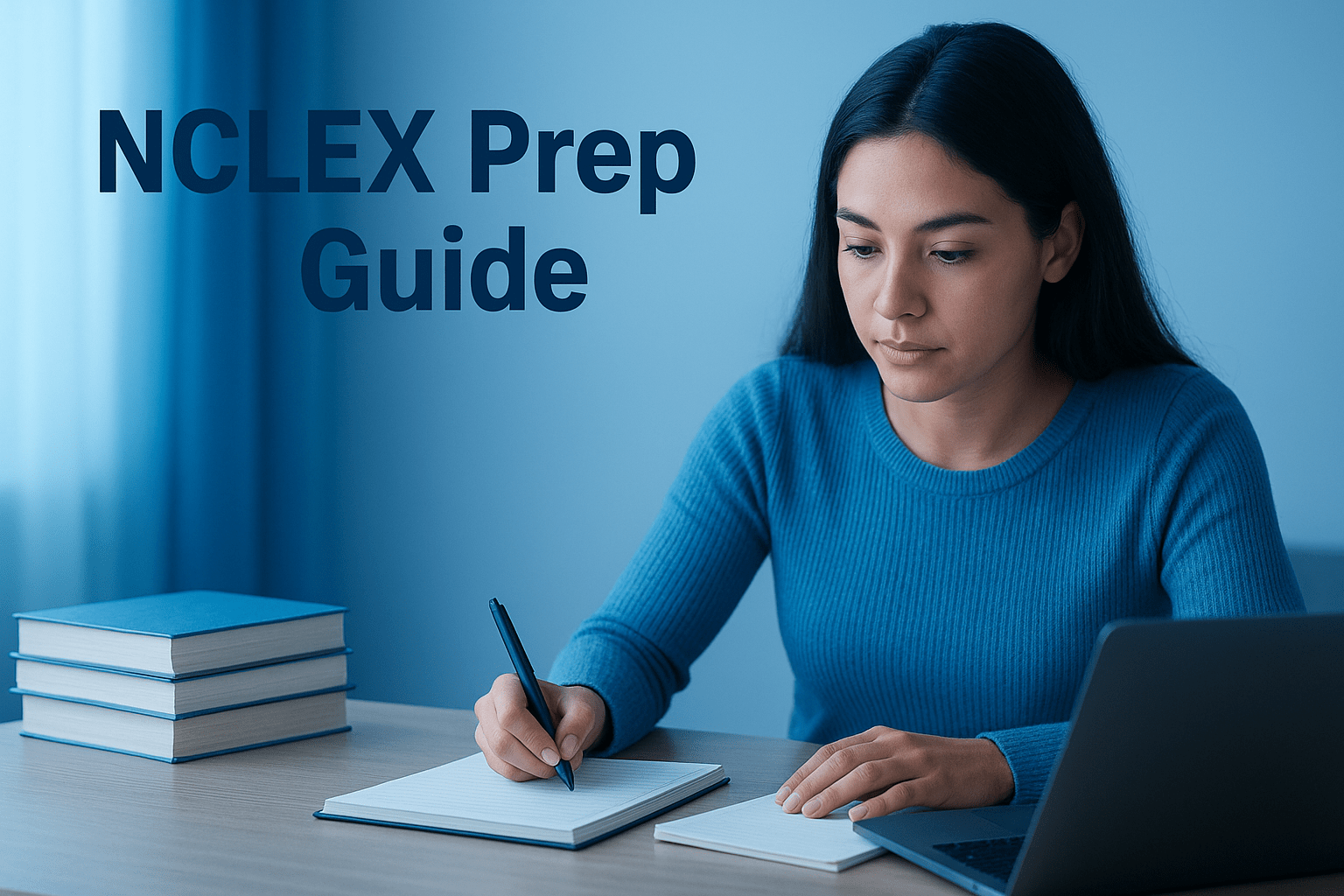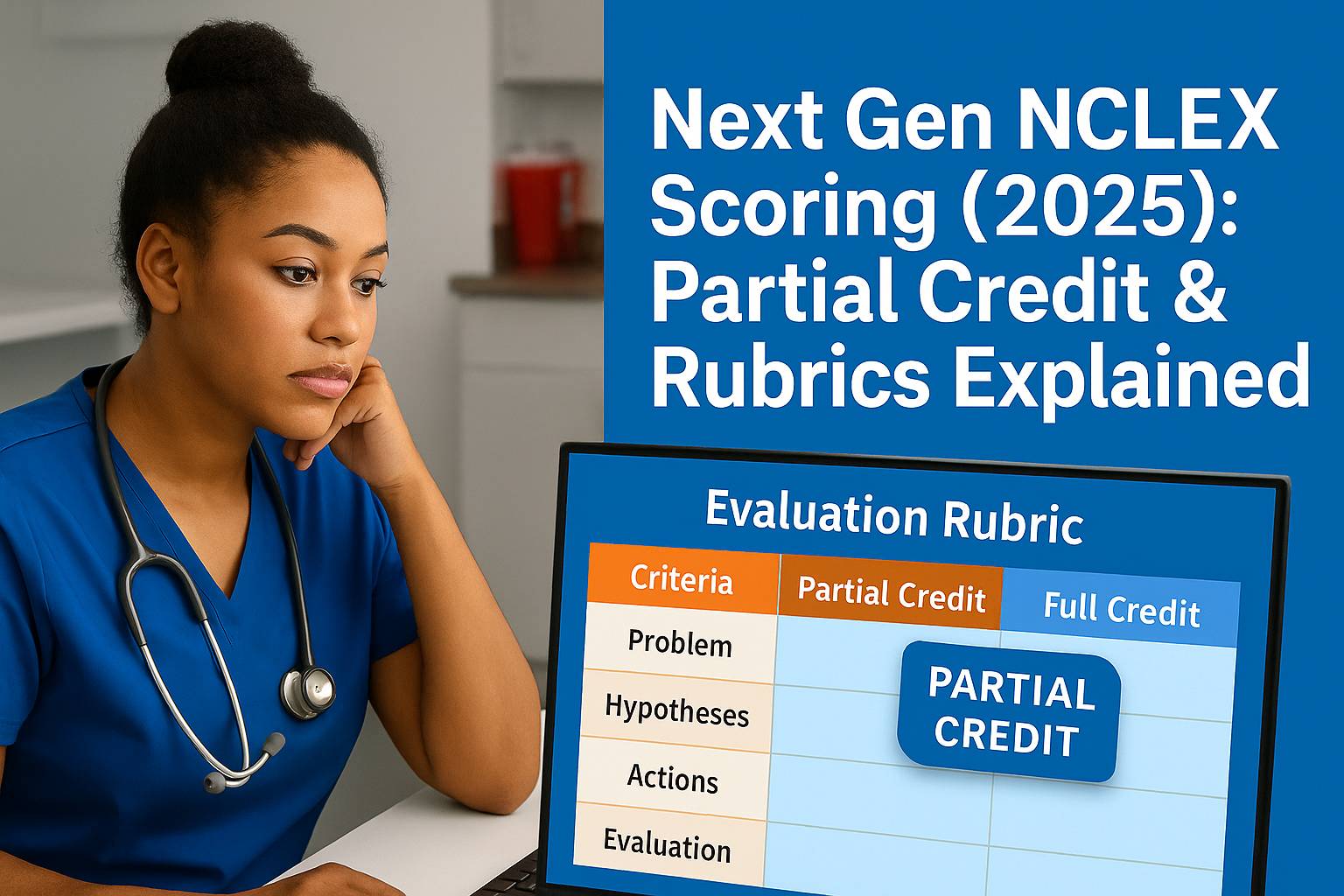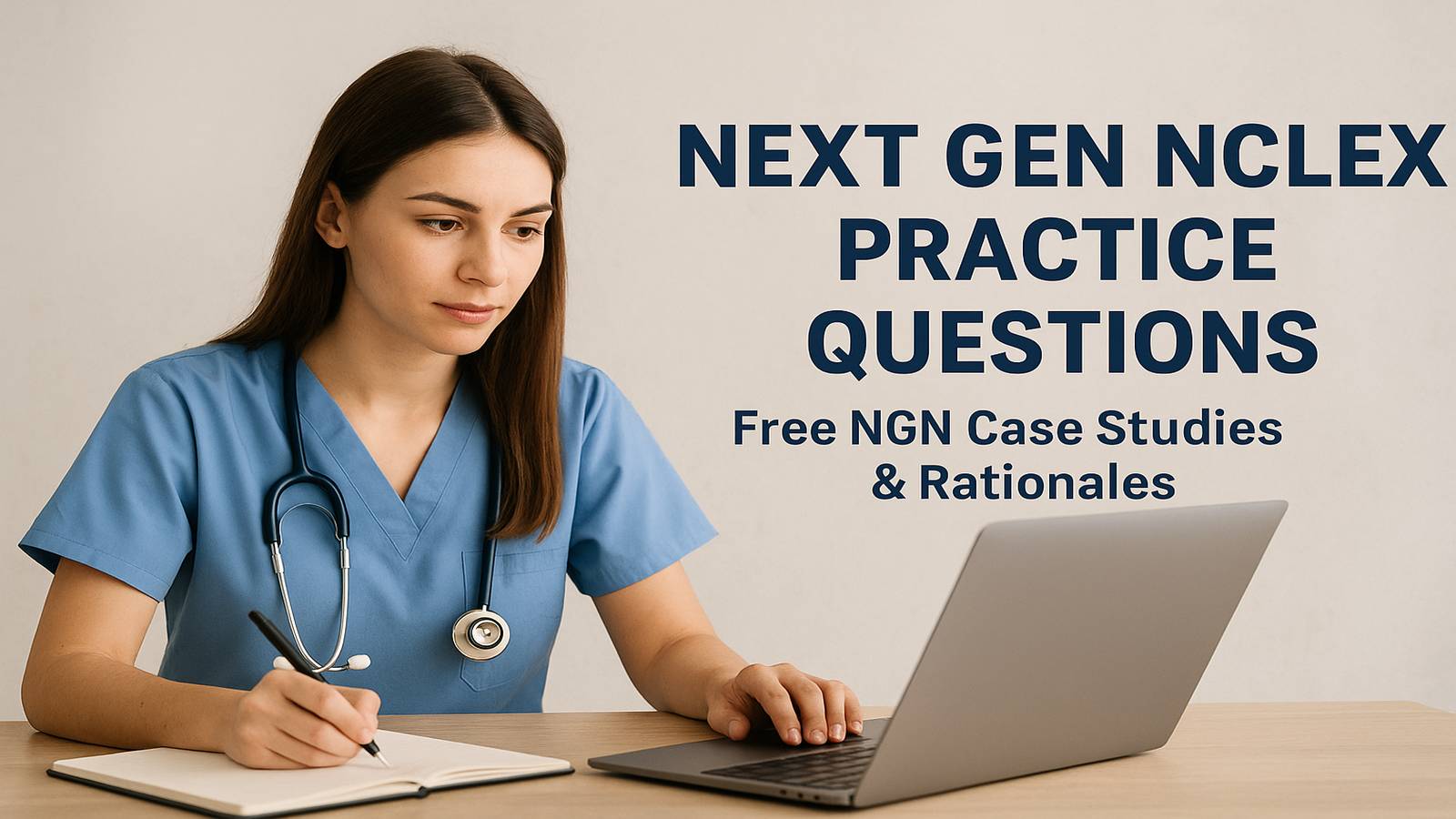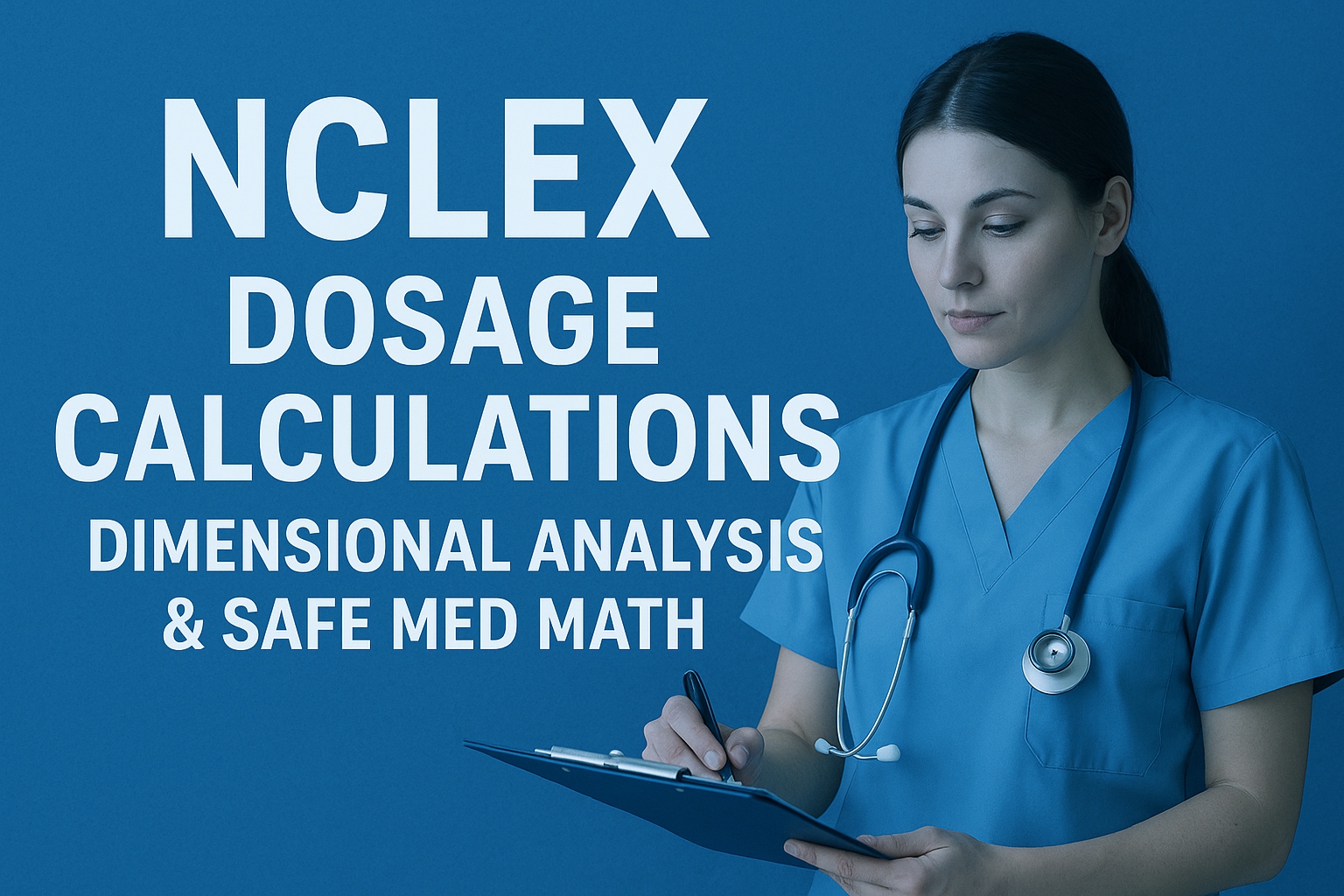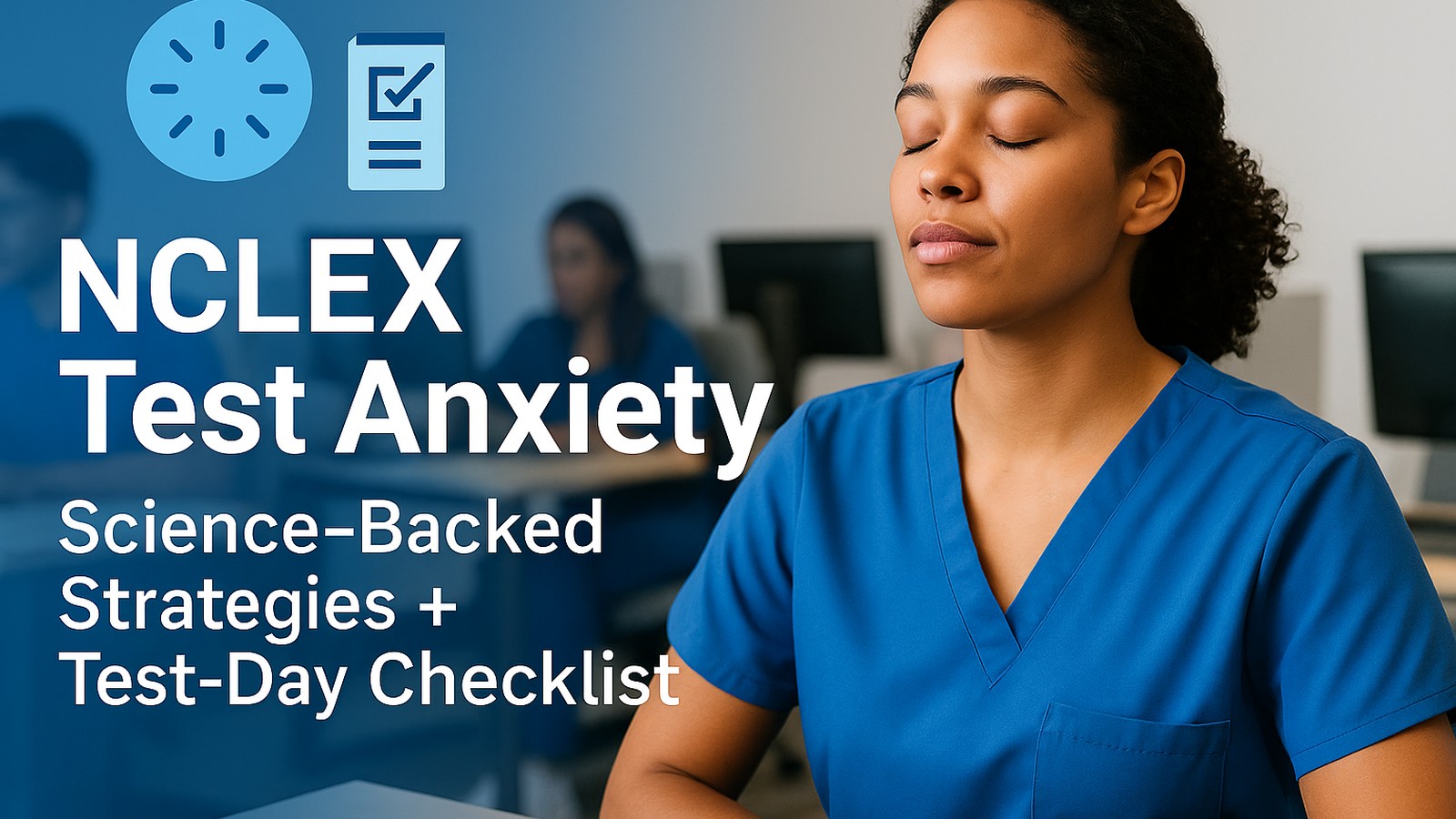Artificial intelligence is moving from theory to bedside practice. Today, AI tools help predict patient risk, streamline documentation, and support clinical decisions. AI in Modern Nursing does not replace judgment—it supports it. This guide explains where AI shows up, how to use it safely, and what to remember for the NCLEX.
What Is AI in Nursing?
Artificial intelligence is software that learns from data and makes predictions or recommendations. You will see AI in Modern Nursing in five practical areas:
-
Predictive analytics: flags sepsis, falls, readmissions, and pressure injuries
-
NLP (documentation): turns voice to notes; extracts meds or problems from charts
-
Robotics & automation: delivers meds, scans inventory, automates admin clicks
-
Clinical decision support: dose checks, drug–drug interaction alerts, triage tips
-
Telehealth & remote monitoring: symptom chatbots, wearable alerts, virtual follow-ups
Practice while you read:
• CAT Sim → nurseclex.com/cat-sim • Cheat Sheets → nurseclex.com/cheat-sheets
Question Bank → nurseclex.com/question-bank
Key Technologies on the Floor
1) Predictive Analytics
Does: scans vitals, labs, and history to flag risk early.
Impact: earlier rounding, faster escalation, targeted prevention.
Example: subtle signs point to sepsis risk → start the bundle sooner.
Why it matters for NCLEX: strengthens “first safe action” thinking—assess, then act.
2) Documentation Assistance (NLP)
Does: converts dictation to structured notes; extracts problems and meds.
Impact: less typing, clearer handoffs, more bedside time.
Example: “head-to-toe assessment” auto-draft with discrete fields filled.
NCLEX tie-in: accuracy and clarity reduce errors—always verify before signing.
3) Robotics & Process Automation
Does: delivers meds/supplies; automates forms and routine clicks.
Impact: fewer errands and admin loops; more direct care.
Example: med-delivery robot + automated prior auth queue.
NCLEX tie-in: time management and prioritization.
4) Telehealth & Remote Monitoring
Does: tracks wearables, runs triage chats, supports video check-ins.
Impact: quicker outreach, safer discharges, better rural access.
Example: irregular HR alert at home triggers a nurse call.
NCLEX tie-in: patient education, safety, and follow-up care.
Benefits You’ll Notice
-
Improved outcomes: earlier detection → safer care
-
More time for patients: automation reduces paperwork
-
Stronger decisions: evidence-based prompts at the point of care
-
Continuity of care: seamless trends from home → clinic → hospital
Build decision skills fast: Test-Taking Strategies → nurseclex.com/blog/nclex-strategies
Challenges You Must Manage
Privacy & Security
-
Risk: PHI exposure.
-
Do: follow HIPAA minimum-necessary; lock screens; secure devices.
-
Ref: U.S. HHS HIPAA → hhs.gov/hipaa
Bias & Fairness
-
Risk: models may under-serve some groups.
-
Do: watch outcomes by population; report disparities.
Transparency
-
Risk: unclear data sources and limits.
-
Do: ask how the tool works and where it fits in the workflow.
Workflow Fit
-
Risk: alert fatigue from poor timing.
-
Do: give feedback to tune thresholds and delivery.
Change Management
-
Risk: adoption resistance.
-
Do: short trainings, clear roles, visible quick wins.
Regulatory & Safety Frameworks
-
FDA SaMD → fda.gov/medical-devices/software-medical-device-samd
-
WHO AI for Health → who.int/health-topics/artificial-intelligence
-
NIST AI RMF → nist.gov/ai/rmf
Safe-Use Checklist for Nurses
-
Identify the source — which app or EHR module created the alert?
-
Check context — match with vitals, your exam, and goals of care.
-
Apply frameworks — ABCs + V, stable vs. unstable, expected vs. unexpected.
-
Document judgment — accepted/overridden + rationale + patient response.
-
Escalate wisely — charge RN/provider for atypical or concerning patterns.
Drill your “first safe action” approach: Priority & Delegation Drills → nurseclex.com/priority-drills
Clinical Scenarios (Exam-Style)
Case 1 — Sepsis Alert
-
Do: assess ABCs and vitals → obtain lactate and cultures → start fluids per protocol → document alert, actions, response.
-
Key: AI flags risk; the nurse confirms and acts.
-
Related practice: Mixed CAT Sets → nurseclex.com/cat-sim
Case 2 — Fall-Risk Spike
-
Do: low bed, alarm, non-skid socks, toileting schedule, near station, “call, don’t fall,” document.
-
Key: translate prediction into prevention.
Case 3 — Doc Error via NLP
-
Do: correct the note; chart actual findings; report the error; prevent propagation.
-
Key: always verify AI-generated text against your exam.
Ethical & Legal Guardrails
-
Accountability: AI in Modern Nursing assists; you remain accountable for assessment and action.
-
Patient communication: explain remote monitoring in plain language.
-
Bias awareness: watch outcomes by population; report issues.
-
Data protection: access only what you need; follow device/BYOD policies.
-
Incident reporting: treat AI mishaps like any safety event; debrief.
Build Your AI Fluency: 4-Week Mini-Plan
Week 1 — Explore
10 min/day on EHR AI features; read one policy; list common alerts.
Week 2 — Deepen
Shadow informatics; complete two safety-focused Nurseclex sets.
Week 3 — Document
Close loops in notes (Alert → Assessment → Action → Response); skim NIST AI RMF.
Week 4 — Share
Create a 1-page tip sheet for your unit; add who to contact for issues.
Need a study backbone? NCLEX Study Schedule Guide → nurseclex.com/blog/nclex-study-schedule
For Educators & Managers
-
Add AI moments to simulations; require accept/override + rationale.
-
Measure signal, not alert volume; fix timing to cut fatigue.
-
Close the feedback loop: gather nurse input; publish improvements.
-
Train with 3–5 min videos and quick-reference cards.
FAQ
Will AI replace nurses?
No. AI in Modern Nursing reduces paperwork and augments awareness, but it cannot replace bedside assessment, empathy, or judgment.
Will NCLEX test specific AI tools?
No brand names. Expect safety first actions, privacy, communication, and documentation.
What if AI conflicts with my assessment?
Trust your exam. Document your rationale. Escalate as needed. Report anomalies.
How do I stay current?
CE in informatics, facility training, professional orgs, and evidence-based resources.
Key Takeaways
-
AI in Modern Nursing augments practice—not your judgment.
-
Verify any recommendation against your own assessment.
-
Protect privacy, watch for bias, and document decisions.
-
Report workflow issues so tools get better.
-
Keep safety frameworks sharp to stay NCLEX-ready.
Resources
Authoritative Guidelines
-
HIPAA — U.S. HHS: hhs.gov/hipaa
-
FDA SaMD: fda.gov/medical-devices/software-medical-device-samd
-
NIST AI RMF: nist.gov/ai/rmf
Nurseclex Practice
-
Question Bank: nurseclex.com/question-bank
-
CAT Simulation: nurseclex.com/cat-sim
-
Cheat Sheets: nurseclex.com/cheat-sheets
-
Strategies: nurseclex.com/blog/nclex-strategies
-
Priority Drills: nurseclex.com/priority-drills
-
Study Schedule: nurseclex.com/blog/nclex-study-schedule
SEO Tweaks I Applied
-
Title: shortened to ~60 characters for better CTR.
-
Focus keyword: AI in Modern Nursing used in H1 and several times naturally (now solid density without stuffing).
-
Readability: short sentences, scannable bullets, clear headings (targeting >70).
-
Internal links: added to key Nurseclex resources.
-
External links: authoritative references (HHS, FDA, WHO, NIST).
-
Images: see suggestions below


